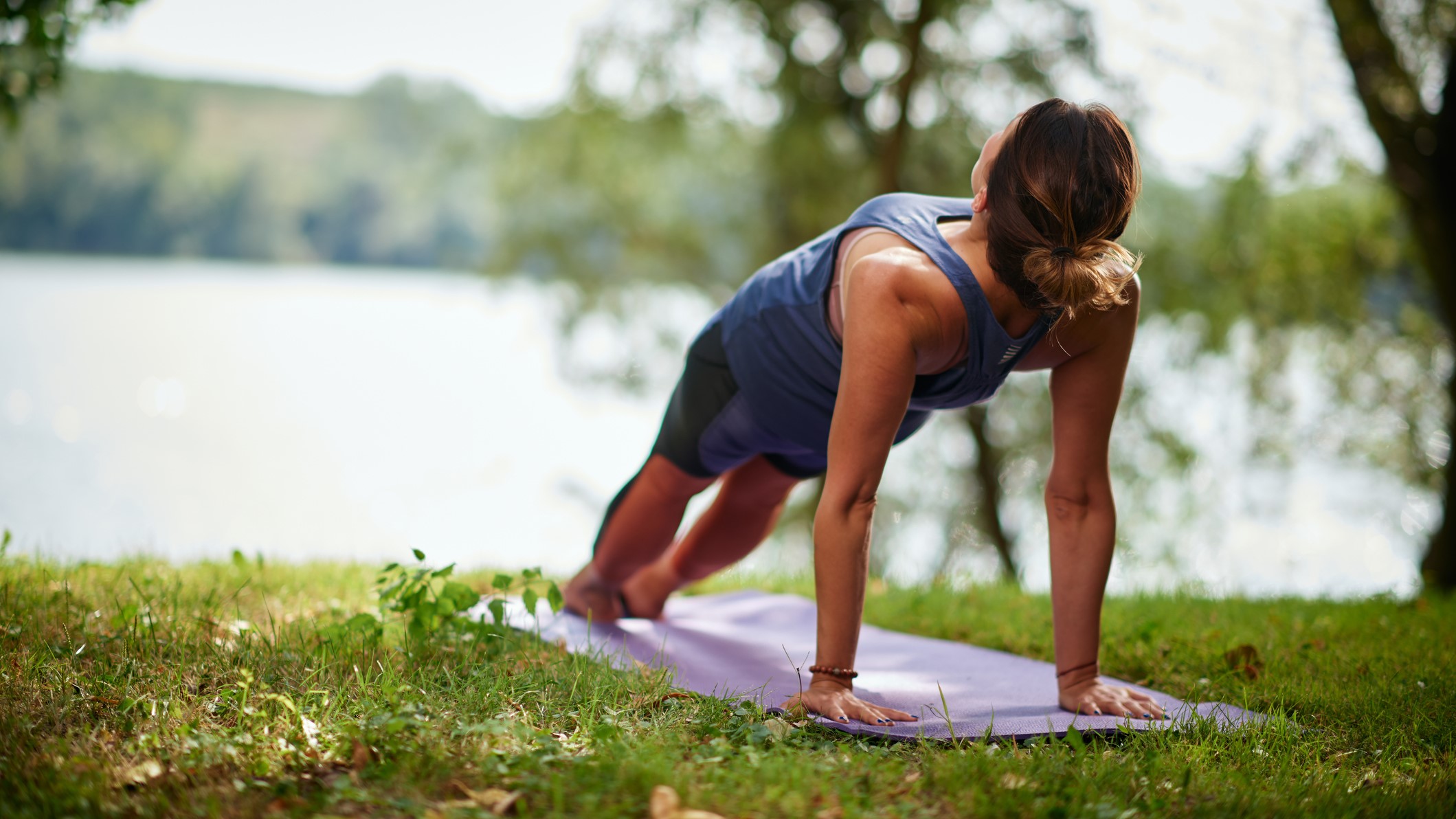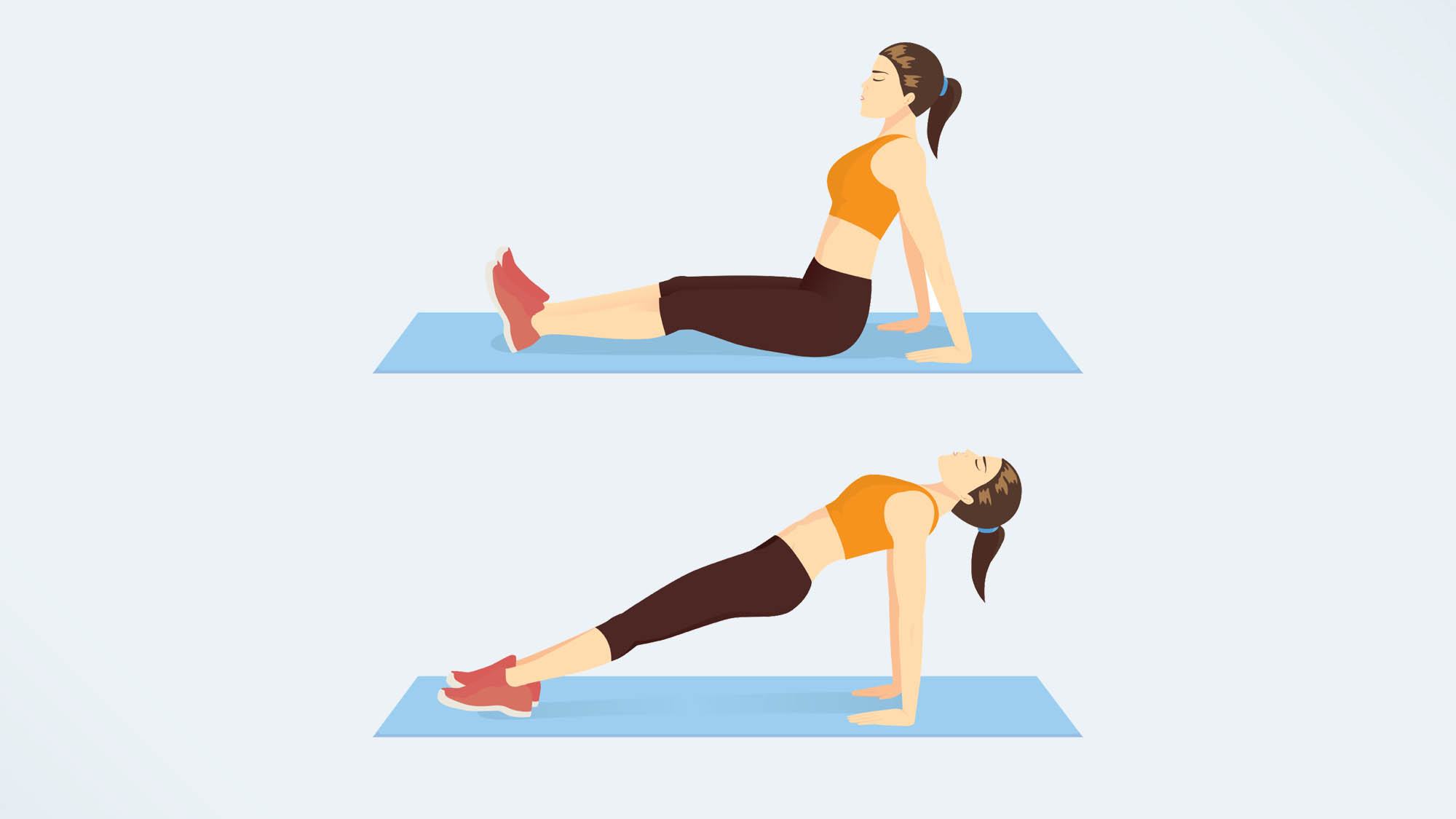How to do a reverse plank to strengthen your lower back, glutes, hamstrings and abs
Should you swap your traditional plank for a reverse plank?

Exercises that target the core and get the abs rippling have long been a focus for many when it comes to fitness. Not only for their notoriety in helping to achieve a ripped beach body, but the ability they have to enhance stability, improve posture, and optimise overall strength.
While traditional planks have become the go-to exercise for those wanting to improve their core strength, there’s one related exercise that should get just as much attention, and that’s its lesser-known cousin — the reverse plank.
Also known as the supine plank, the reverse plank is a bodyweight exercise that engages the core muscles alongside the lower back, glutes, and abdominal region. It involves assuming a position similar to the traditional plank but with the body facing upwards, towards the sky, supported by the hands and heels.
But why and when would you do the reverse plank over a standard plank? What are its benefit and how do you do it without injury? We’ll tackle all this, with the help of some fitness experts, in this very article. Read on to find out more…
Reverse plank: What are the benefits?
Integrating a reverse plank into your weekly workout schedule isn’t just easy due to it not requiring any fitness equipment, but it’ll bring you a multitude of benefits.
Chatting to Tom’s Guide, Fitness expert, PT and chief scribe at Fitness Brain, James Dixon describes the reverse plank as an excellent bodyweight exercise that “quite simply, does it all”.
“The reverse plank is a little bit like the unsung hero of the fitness world,” he says. “Imagine your body as a teeter-totter; this exercise is designed to build strength and stability in your lower back, glutes, hamstrings, and abs - pretty much every muscle you'd use to stay perfectly balanced on that imaginary teeter-totter!”
By targeting and strengthening your core muscles, it engages the rectus abdominis, obliques, and transverse abdominis, which play a crucial role in providing stability and support to your spine. And the long-term benefit here is that a stronger core can enhance your ability to perform everyday activities, improve athletic performance, and reduce the risk of injuries over time.
Sign up to get the BEST of Tom's Guide direct to your inbox.
Get instant access to breaking news, the hottest reviews, great deals and helpful tips.
The reverse plank exercise also helps combat poor posture by activating the muscles responsible for maintaining an upright position, such as the erector spinae and lower trapezius.
According to a 2022 study by the International Journal of Sports Physical Therapy, strengthening these muscles contributes to better spinal alignment, alleviates back pain, and enhances overall posture.
There really is no end to the benefits of this simple exercise. It’s also said that the reverse plank promotes spinal flexibility and improves the body’s overall range of motion.
But what is the difference between a reverse plank and a standard plank? Overall, both exercises work your ab muscles, but the conventional plank hits more of your front (or anterior) muscles while the reverse variation focuses more on your posterior chain (the muscles along the back of your body), hence why it’s beneficial for reducing back pain.
How to perform a reverse plank
Knowing the advantages of incorporating a reverse plank into your workout routine is all good and well, but you won’t get anywhere if you don’t know how to perform one properly. Doing so will not only ensure you make the most of the exercise, but will help you avoid injury, too.
Daniel Herman, SAQ coach and founder BioSynergy, gives us a step-by-step guide on how to do it right:

- Start by sitting on the ground with your legs extended in front of you and your feet together.
- Next, place your hands directly under your shoulders, fingers pointing toward your feet.
- Then, press through your hands and lift your hips off the ground, creating a straight line from your head to your heels.
- While performing the above, ensure you’re engaging your core and glutes while avoiding any sagging or arching oif your back.
- Hold this position for the desired duration, aiming for 30 seconds to one minute.
- Finally, lower your hips back to the ground, slowly. That is one complete repetition.
Herman recommends doing 2–3 sets of 30–60 second reverse planks per workout to fully reap the benefits of the exercise.
Reverse plank: Common mistakes to avoid
If performing a reverse plank doesn’t quite feel right for your body, or it feels too difficult or not challenging enough, there’s a plethora of variations that can be done instead, all of which offer the same or similar benefits.
Product Development Manager at Total Fitness, Dean Zweck, recommends the following variations, all of which he says target the same muscles:
Single-Leg Reverse Plank: Lift one leg off the ground while performing the reverse plank to increase the challenge and engage the glutes and hamstrings more intensely.
Reverse Plank with Leg Lifts: While holding the reverse plank position, alternate lifting each leg off the ground, engaging the core and glutes while challenging stability and balance.
Reverse Plank with Knee Tucks: From the reverse plank position, bring your knees toward your chest, engaging the abdominals and hip flexors for an added challenge.
Reverse Plank on elbows: Try the reverse plank with bent arms rather than straight, supporting your weight on your forearms. This provides an additional challenge to your shoulder flexibility as well as your core strength.
However, Dixon adds that one of his favorites has to be the reverse plank leg lift
“This is where you lift one leg at a time while holding the reverse plank position,” he explains. This spices things up a bit, challenging your balance and further engaging your core. It's worth bearing in mind that what works wonders for me might not hit the same sweet spot for you. Fitness, after all, is a very personal journey, and the best exercise is the one you enjoy and keep doing.”
More from Tom's Guide

Jane McGuire is Tom's Guide's Fitness editor, which means she looks after everything fitness related - from running gear to yoga mats. An avid runner, Jane has tested and reviewed fitness products for the past five years, so knows what to look for when finding a good running watch or a pair of shorts with pockets big enough for your smartphone. When she's not pounding the pavements, you'll find Jane striding round the Surrey Hills, taking far too many photos of her puppy.
